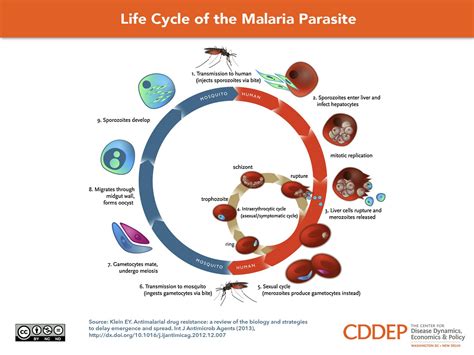Plasmodium Travel Methods

Introduction to Plasmodium and Its Travel Methods
The Plasmodium parasite is known for causing malaria, a disease that affects millions of people worldwide. This parasite has a complex life cycle, involving both a mosquito vector and a human host. Understanding how Plasmodium travels from one host to another is crucial for developing effective strategies to combat malaria. In this article, we will delve into the details of Plasmodium travel methods, exploring the role of mosquitoes, the parasite’s life cycle, and the factors that influence its transmission.
The Role of Mosquitoes in Plasmodium Transmission
Mosquitoes, specifically females of the Anopheles genus, are the primary vectors of Plasmodium parasites. These mosquitoes become infected when they feed on the blood of an individual already infected with the parasite. The parasites then undergo a series of developmental stages within the mosquito before becoming infective to humans. When an infected mosquito bites a human, it injects the parasites into the person’s bloodstream, initiating the infection process. The role of mosquitoes in the transmission of Plasmodium parasites is pivotal, making them a key target for malaria control efforts.
Life Cycle of Plasmodium Parasites
The life cycle of Plasmodium parasites is complex and involves several stages, both within the mosquito vector and the human host. The cycle begins when a mosquito ingests the blood of an infected individual, taking in gametocytes, the sexual stage of the parasite. Within the mosquito, these gametocytes undergo fertilization, resulting in the formation of zygotes, which then develop into ookinetes and eventually oocysts. The oocysts rupture, releasing sporozoites, which migrate to the mosquito’s salivary glands. When the infected mosquito bites a human, the sporozoites are injected into the person’s bloodstream, beginning the infection process in the human host. Inside the human, the parasites undergo further developmental stages, including the liver stage and the blood stage, before producing gametocytes that can infect mosquitoes, thus continuing the cycle.
Factors Influencing Plasmodium Transmission
Several factors influence the transmission of Plasmodium parasites, including: - Environmental factors: Temperature, humidity, and the presence of breeding sites for mosquitoes can significantly impact the rate of transmission. - Human behavior: Practices such as sleeping outdoors without bed nets or failing to use insect repellents can increase the risk of being bitten by an infected mosquito. - Vector control measures: The use of insecticide-treated bed nets, indoor residual spraying, and other vector control methods can significantly reduce the transmission of Plasmodium parasites. - Immunity and vaccination: The development of immunity, either through repeated exposure to the parasite or vaccination, can reduce an individual’s susceptibility to infection.
Control and Prevention Strategies
Given the complexity of Plasmodium transmission, a multifaceted approach is necessary for effective control and prevention. This includes: - Vector control: Implementing measures to reduce mosquito populations and prevent bites. - Chemoprophylaxis: Using medications to prevent infection in individuals traveling to or living in areas where malaria is common. - Vaccination: Developing and distributing vaccines that can provide immunity against Plasmodium parasites. - Early diagnosis and treatment: Promptly identifying and treating infected individuals to reduce the parasite reservoir and prevent further transmission.
📝 Note: Understanding the travel methods of Plasmodium parasites is crucial for developing effective malaria control strategies. By targeting the parasite's life cycle and the factors that influence its transmission, we can work towards reducing the global burden of malaria.
In the context of Plasmodium travel methods, it’s essential to consider the interplay between the parasite, the mosquito vector, and the human host. This complex relationship underscores the need for comprehensive approaches to malaria control, incorporating vector control, personal protective measures, and community-wide interventions.
| Stage | Description | Location |
|---|---|---|
| Gametocytes | Sexual stage of the parasite | Human bloodstream |
| Sporozoites | Infective stage to humans | Mosquito salivary glands |
| Oocysts | Stage within the mosquito | Mosquito midgut |
The journey of Plasmodium parasites from one host to another is intricate, involving precise developmental stages and interactions with both the mosquito vector and the human host. By dissecting these travel methods and understanding the factors that influence transmission, we can better design and implement strategies to combat malaria, ultimately working towards a future where this disease no longer poses a significant threat to global health.
To summarize the key points, the transmission of Plasmodium parasites is a complex process involving mosquitoes, human hosts, and environmental factors. Effective control and prevention strategies must consider the parasite’s life cycle, vector control, personal protective measures, and community-wide interventions. By adopting a comprehensive approach to addressing malaria, we can make significant strides in reducing the disease’s global impact.
What is the primary vector for Plasmodium parasites?
+
The primary vector for Plasmodium parasites is the female Anopheles mosquito.
What stage of the Plasmodium parasite is infective to humans?
+
The sporozoite stage of the Plasmodium parasite is infective to humans.
How can the transmission of Plasmodium parasites be prevented?
+
The transmission of Plasmodium parasites can be prevented through the use of insecticide-treated bed nets, indoor residual spraying, and other vector control measures, as well as personal protective measures such as wearing insect repellent and protective clothing.